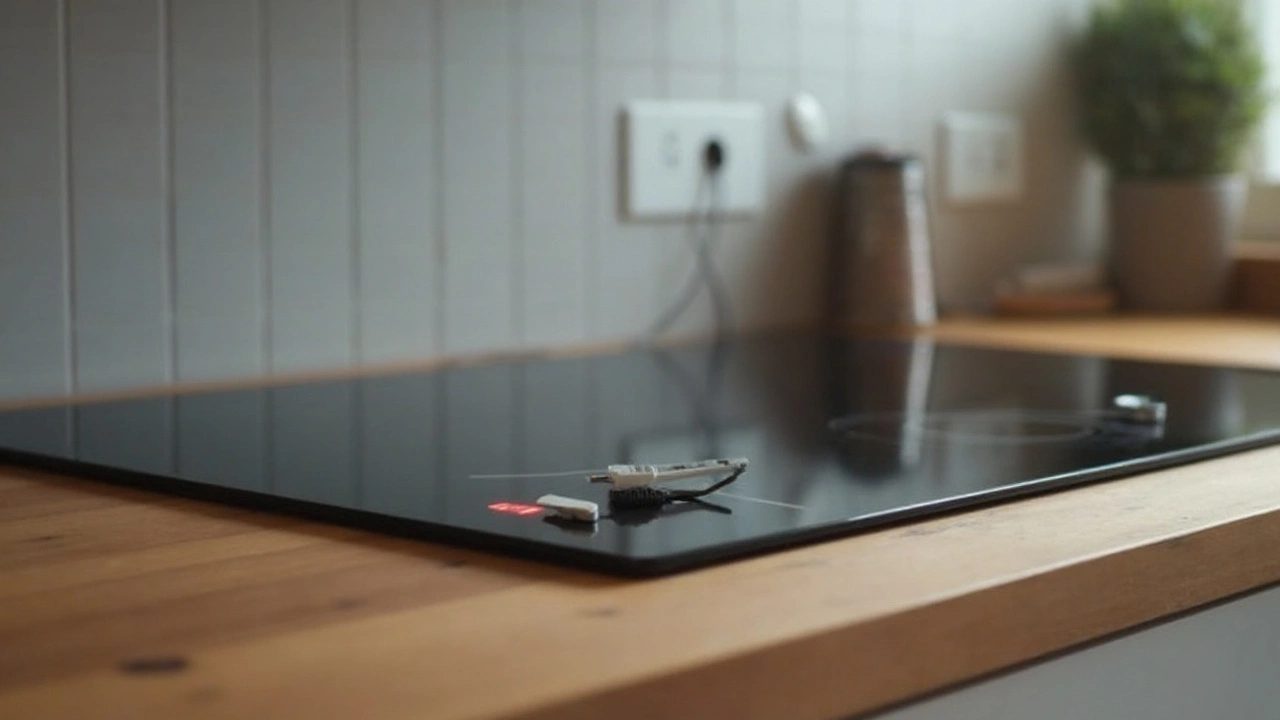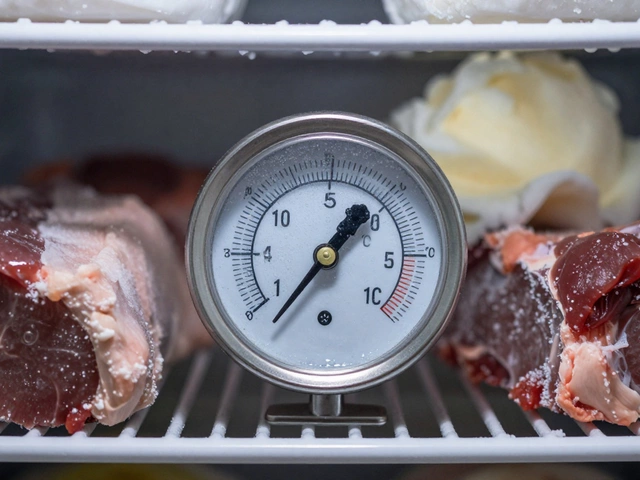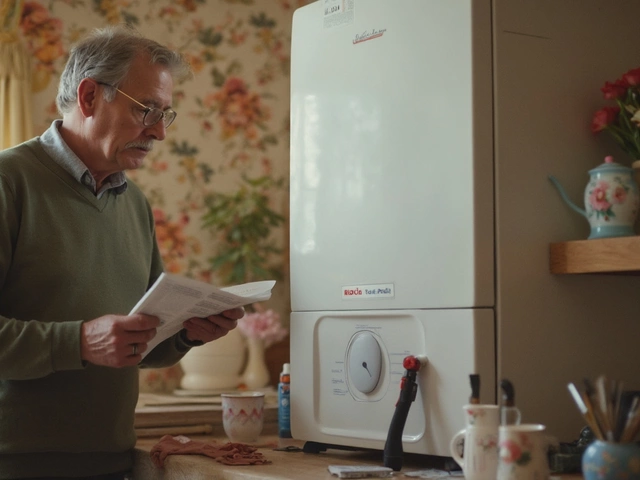Burner won’t heat up? Controls acting weird? If you’ve got an electric hob that’s given you the cold shoulder, you’re not alone—it happens a lot more than you’d think. Good news: many electric hob problems aren’t a death sentence for your kitchen. Not every glitch means you’ll need a brand new cooktop, either.
Before shelling out for a replacement, it’s smart to understand what actually goes wrong with these things. Often, it’s something as basic as a loose connection or a worn-out element. Sometimes the problem’s right under your nose, like a faulty control knob or a child lock that’s accidentally turned on. Even spilled soup can trip up the electronics underneath—seriously, that happens all the time.
The trick is to figure out if you’re dealing with a simple hiccup or a real breakdown that needs expert hands. Spoiler: you can sort out some issues yourself with a screwdriver and a bit of patience. But don’t go yanking wires or poking around inside unless you know what you’re doing—safety first, always.
- What Makes Electric Hobs Go Wrong?
- Can You Fix It Yourself?
- When to Call a Pro (and When Not To)
- Are Spare Parts Easy to Find?
- Is It Worth Repairing or Should You Replace?
What Makes Electric Hobs Go Wrong?
Most electric hobs don’t just quit out of nowhere—they usually drop hints or start acting weird first. Knowing what causes them to mess up makes it way easier to sort things out fast. Problems usually fall into a few main categories.
- Heating Elements Burn Out: That’s the bit under the glass (or metal) that heats your pans. They wear out with age, heavy use, or if you spill food on them and don’t clean it up right away.
- Control Knobs or Touchpads Stop Responding: If the controls stop working, it’s often because of gunk buildup or because the internal contacts have worn down after thousands of uses.
- Electrical Issues: Sometimes, loose wiring inside the hob can cause it to work on and off. Power surges can blow fuses or mess up the circuit board, especially if you don’t have surge protection at home.
- Thermal Cut-Outs Trip: This is a safety thing—if the hob thinks it’s overheating, it shuts itself down. Fat spills and poor ventilation can trigger this by trapping heat around the electronics.
- Glass Surface Cracks: Dropping something heavy or just placing a cold pot on a hot hob can crack the top. Cracks aren’t just ugly—they can also mess with the appliance’s safety and performance.
Here’s a quick glance at some common faults and how often they show up, based on repair service call data:
| Problem | % of Cases |
|---|---|
| Heating element failure | 42% |
| Electrical faults / blown fuse | 20% |
| Control issues (knob/touch) | 18% |
| Cracked glass | 12% |
| Other (sensor, thermostat, etc.) | 8% |
If you notice things like uneven heating, a single ring that won’t switch on, or flashing error codes, your hob is crying out for attention. Don’t ignore these signs—it usually gets worse if left alone. And if you smell burning or see smoke, unplug and stop using the hob right away.
Can You Fix It Yourself?
Electric hobs look intimidating, but some fixes are pretty straightforward. Most issues come down to simple stuff—like a burner that won’t heat or a control knob that goes wonky. The big question is: what’s safe and sensible to tackle yourself?
If your electric hob repair involves just swapping out a knob or resetting a breaker, you’re in luck—these fixes usually take minutes. Elements that stop heating often just need replacing. You’ll find lots of how-to videos online, but don’t forget to unplug the hob or kill the power at the fuse box first. Getting zapped is never a good time.
Here are some DIY fixes regular people attempt:
- Replacing a burner element: Elements wear out. If one section of the hob is cold, try a replacement. Just make sure to buy the right part for your exact model.
- Cleaning connections: Sometimes a burner won’t work because debris or spills gum up the works. Unplug the hob and clean metal parts carefully.
- Resetting the hob: If your hob has a digital display, sometimes switching it off at the mains for 10 minutes resets the system.
- Checking fuses: In the UK, nearly all electric hobs have a fuse either in the plug or a dedicated circuit box. If nothing works, look here first.
But here’s the deal: if the problem involves wiring, smells like burning, or the unit keeps tripping your electricity, that’s when you back away and call a professional. Nothing kills a mood (or a kitchen) like an electrical fire.
“You should never try to repair internal wiring or touch live terminals unless you’re trained—mistakes can cause fires or severe electric shocks.” — The Association of Electrical Safety Professionals (2023)
Want some real-world numbers? The table below shows how often DIYers try different fixes, based on a 2022 UK appliance repair survey:
| DIY Hob Fix | Percentage Who Tried | Success Rate |
|---|---|---|
| Replace Knob | 54% | 95% |
| Swap Heating Element | 36% | 70% |
| Check Fuses | 41% | 88% |
| Fix Faulty Display | 12% | 33% |
Basic fixes like knobs or fuses? Go for it, as long as you’re comfortable and safe. More complicated stuff, especially if wires or circuits are involved, deserves a pro’s touch. Shortcuts just aren’t worth it here.

When to Call a Pro (and When Not To)
Deciding if you need a repair specialist or can take care of your electric hob yourself can save you a lot of time, money, and maybe some frustration. Here's a quick lowdown on what makes sense to hand off to a pro, and what's fair game for a confident DIY fan.
You definitely want to call in a pro if:
- The glass top is cracked or shattered. This isn't just about looks. Cracks can mess with the heating and are a safety risk because of exposed wires or sharp edges.
- The problem is inside the main circuit board or wiring. Even if you're a handy person, poking around inside controls or electronics can put you in danger of a shock or fire.
- The hob keeps tripping your circuit breaker. This usually means a real electrical problem, not just a random short.
- None of the burners work at all, or the display keeps glitching. That's usually deeper than a knob or element issue.
On the other hand, you can often fix things at home if:
- One ring isn’t heating up but the others work fine—could just be a burnt-out ring element.
- The controls feel loose or don’t click into place—a replacement knob is an easy swap and costs around £10 to £30 in the UK.
- The child lock feature won’t turn off—this usually just needs a button combo (check your manual, or Google your model + “child lock”).
- The hob just needs a good clean to fix touch controls being unresponsive—spillovers are a surprisingly common cause.
In England, data from HomeServe in 2024 showed about 35% of electric hob callouts were down to simple issues like spills or child lock mistakes. Only 15% were true electrical faults needing a licensed repair. So it’s worth checking the simple stuff before picking up the phone.
| Problem | DIY or Pro? | Average UK Cost |
|---|---|---|
| Burnt-out ring/heating element | DIY or Pro | £50-£120 (with part and labour) |
| Broken glass top | Pro | £120-£300 |
| Loose/faulty knob | DIY | £10-£30 |
| Main circuit board fault | Pro | £150+ |
If you’re not sure, don’t risk it—better safe than sorry with electric appliances. And remember, fiddling with the wrong part can void your warranty. If your hob is still under warranty (or it’s just a year or two old), always ring the manufacturer before you try fixing it yourself.
Last tip: If a repair is going to cost more than half the price of a new hob, most techs say it’s time to replace instead of repair. You don’t want to throw good money after bad.
When in doubt, call a professional—especially when it comes to anything more complicated than swapping out a knob or doing a deep clean. That way, your kitchen stays safe, and you keep your peace of mind.
Are Spare Parts Easy to Find?
Tracking down the right spare part for your electric hob isn’t always as easy as ordering a pizza, but it’s far from impossible. Whether you’re after heating elements, knobs, switches, or circuit boards, most major brands keep a decent stock of replacement parts, especially for models less than 10 years old.
Here’s the reality: big names like Bosch, Hotpoint, and Siemens usually have parts available online through their own websites or through appliance dealers. Even Amazon and eBay carry a wide range, including used and generic options that cost a fraction of what the official ones do. But if your hob came from an obscure brand or it’s older than your favorite sneakers, you might be out of luck—and this is often where repairs hit a wall.
Knowing your hob’s model number is crucial. This is usually found underneath the cooktop or around the side. Without it, finding the right part is like hunting for a needle in a haystack. Once you have the model number, you can search supplier sites or even check with local repair shops—some keep hard-to-find bits in the back room.
Here’s a quick table showing spare part availability for common brands and hob ages, just to give you a sense of what’s out there:
| Brand | Models <5 years old | Models 5-10 years old | Models >10 years old |
|---|---|---|---|
| Bosch | Easy | Mostly Easy | Can Be Tricky |
| Hotpoint | Easy | Moderate | Rare |
| Samsung | Easy | Moderate | Rare |
| Beko | Easy | Moderate | Very Hard |
| Unbranded/Unknown | Moderate | Hard | Almost Impossible |
If you’re dealing with a electric hob repair and want a quick tip, always search for parts using the full model number instead of just the brand. And if an element or control board is special-order and costs more than a third of a new hob, it might be time to rethink the fix.

Is It Worth Repairing or Should You Replace?
Facing the big question: Is fixing your electric hob going to save you money, or are you better off buying a new one? Here’s the deal—sometimes a quick repair is cheap and does the trick, but other times, you’re just delaying the inevitable and wasting cash. You’ve got to weigh up a few things before grabbing your tools or calling for help.
Think about the age of your hob first. Most electric hobs last between 8 and 12 years. If yours is pushing double digits, repairs aren’t likely to buy you much more time. It's like putting new tires on a car with a busted engine. But if the hob is only a few years old, a repair often makes sense.
The cost of repair versus replacement is key. Quick fixes, like swapping out a broken electric hob ring or replacing a loose knob, are usually cheap—parts often cost between £15–£50, and you can do the job yourself or pay a pro for about £60–£100. The real trouble starts with things like failed touch panels or circuit boards. Those can set you back £120 or more, and that’s before labor. You really need to compare that with the price of a new hob, which usually starts at £200 for a basic model but can be £600 or more for something fancy.
| Repair | Cost Range (UK) | Typical DIY? |
|---|---|---|
| Replace heating element | £20–£60 | Sometimes |
| Replace control knob | £10–£25 | Yes |
| Replace main circuit board | £120–£200 | No |
| Professional labour | £60–£120 | No |
| New standard electric hob | £200–£400 | N/A |
Here are some good rules of thumb for deciding what to do:
- If the repair cost is more than half the price of a new hob, just replace it.
- If your hob has broken down more than twice in the last year, it’s a sign of bigger problems.
- Newer hobs are way more energy-efficient and safer, so replacing an old model might actually save you money on your bills long term.
- If spare parts are impossible to find (happens a lot with older or weirdly branded models), you’ll spend more time searching than it’s worth.
For most standard issues—think single rings not working, cracked knobs, or if it’s just a wiring thing—a repair is usually worth it. But for anything involving major electronics or if your hob is ancient, put your money toward a new one.





